The Blossoming Composite Floral Pattern: A Cultural Code in Hanfu Design
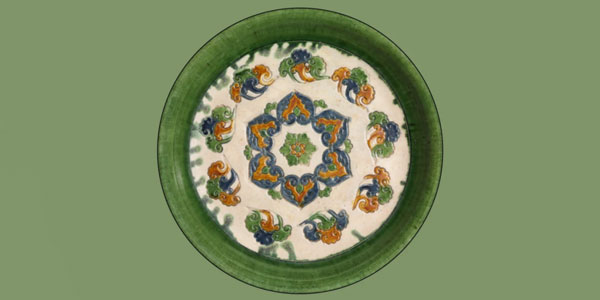
At the heart of the ceiling in Cave 320 of the Mogao Grottoes in Dunhuang, a composite floral pattern
—crafted from an eight-petaled lotus—has bloomed undiminished for over a millennium. This intricate motif, born as a masterpiece of Buddhist art, evolved through centuries into one of the most philosophically profound decorative symbols adorning Hanfu. Far from a simple ornament, the composite floral design embodies the essence of cultural exchange along the Silk Road, crystallizing the Chinese wisdom of “harmony in diversity.”
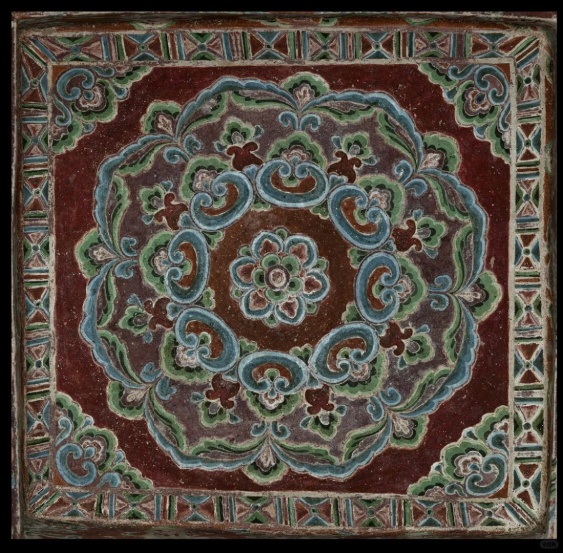
I. The Civilizational Genes of the Blossoming Composite Floral Pattern
The origin of the Blossoming Composite Floral Pattern (宝相花纹) can be traced back to the cultural upheaval during the eastward spread of Buddhism. In the Northern Wei Dynasty, the lotus pattern from Indian Buddhist art met the cloud – like pattern native to China along the Silk Road. Craftsmen integrated the curls of the Greek acanthus pattern, the order of the Persian bead – and – circle pattern, and the softness of the Western Regions honeysuckle pattern, creating this “flower that is not a real flower.” The Sogdian gold and silverware brought by foreign merchants in the Western Market of Chang’an(now Xi’an) during the Tang Dynasty further injected the heraldic composition of the Sassanian Dynasty into it, making the Blossoming Composite Floral Pattern a veritable “flower of the Silk Road.”
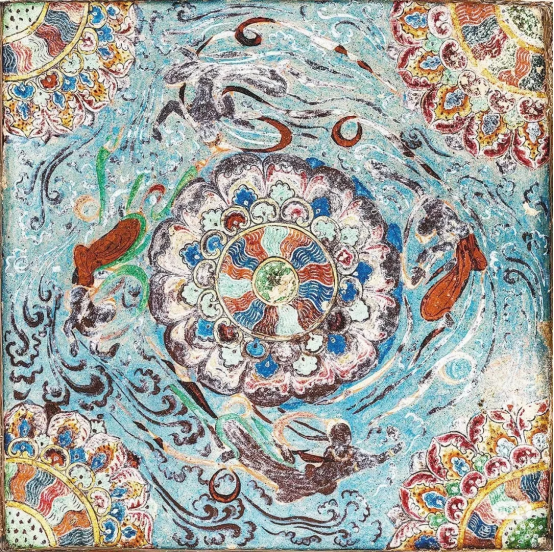
The Blossoming Composite Floral Pattern, also known as the precious fairy flower or precious lotus flower, is a traditional Chinese auspicious pattern and a commonly used decorative pattern in Buddhism. The Blossoming Composite Floral Pattern is an artistic fusion of the shapes of petals, flower buds, and leaves extracted from various flowers such as lotus, pomegranate, peony, and chrysanthemum. The term “宝相” is a respectful title for Buddha statues by Buddhists, and the the flower represents an ideal flower shape that is holy, dignified, and beautiful. This decorative pattern has been a popular design since the Wei, Jin, and Southern and Northern Dynasties, accompanying the prevalence of Buddhism, and was widely used in grotto art.
The Blossoming Composite Floral Pattern varies in different periods. To meet diverse needs, it can be deformed, presenting various graceful and colorful forms. The development of the pattern has gone through three periods:
- Wei, Jin, and Southern and Northern Dynasties: During this time, patterns featuring plant flowers became increasingly common. The blossoming composite floral pattern entered many artistic fields such as ceramic art, architectural decoration, and vessel decoration.
- Sui and Tang Dynasties: The blossoming composite floral pattern became more full – bodied. Based on different natural flowers, it had multiple layers of petals, exuding an elegant and luxurious beauty.
- After the Sui and Tang Dynasties: The blossoming composite floral pattern became popular on brocades, bronze mirrors, and porcelain, evolving into a unique traditional pattern of the Chinese nation.
There are a large number of Blossoming Composite Floral Pattern in the Dunhuang Grottoes. In particular, the caisson ceiling patterns have a long history and exist in large numbers, being the essence of the patterns in the Dunhuang Grottoes. The magnificent Dunhuang caisson ceiling patterns come in various types, with exquisite craftsmanship, showing a riot of colors. They are like a Book of Songs in the art world, condensing the essence of art and containing exuberant vitality. The Baoxiang flower patterns on the caisson ceilings of the Mogao Caves in Dunhuang are especially distinctive.
As early as in ancient China and India, Blossoming Composite Floral Pattern symbolized femininity, love, vitality, and creativity. Based on these, it evolved to carry meanings of wealth, good luck, holiness, and happiness. Therefore, it was widely used in murals, utensils, and clothing.
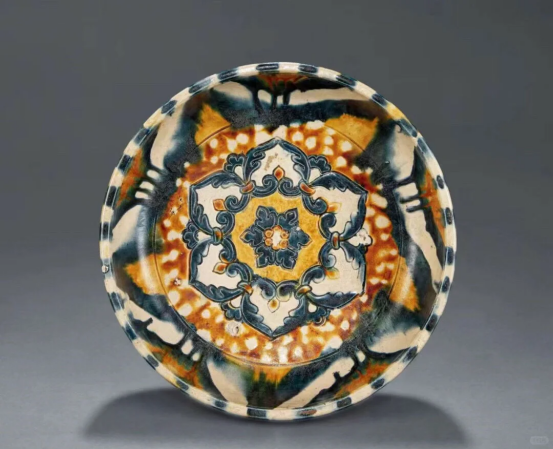
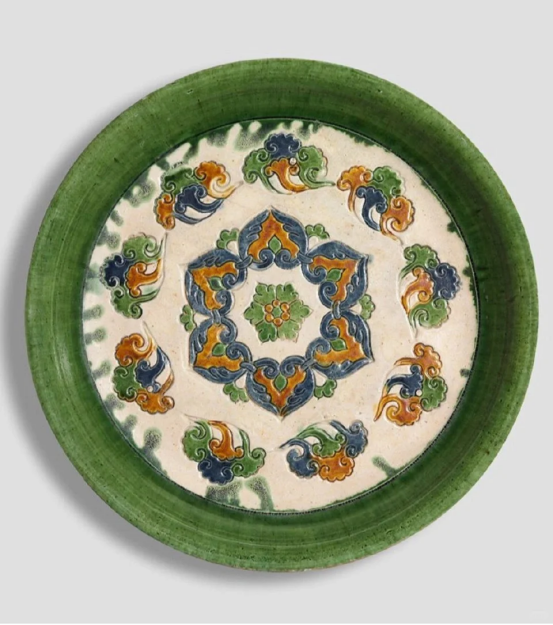
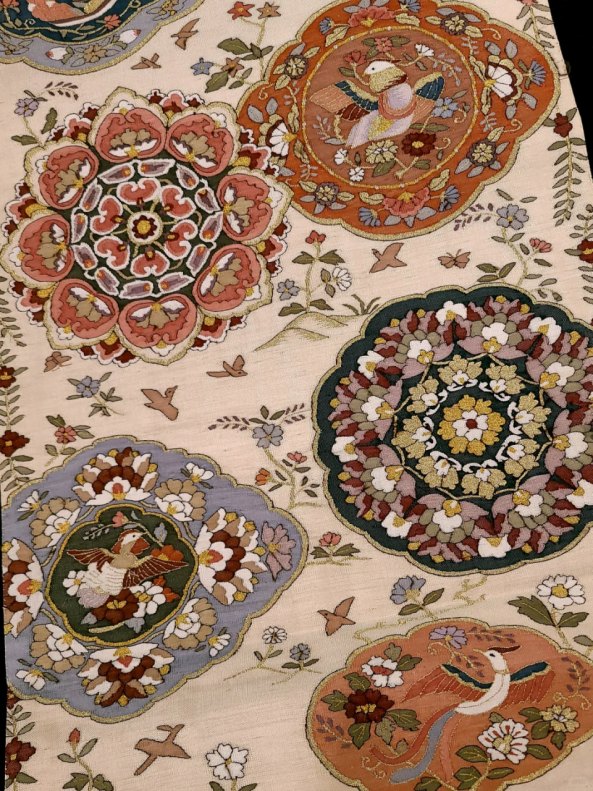
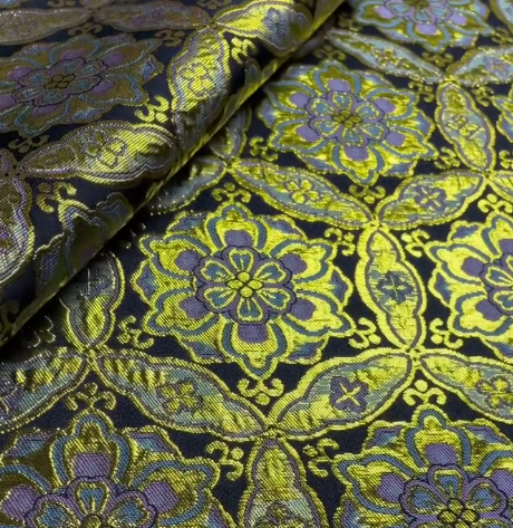
II. The Order of Heaven and Earth in Patterns
The spatial composition of this pattern aligns with the ancient Chinese view of the universe. The central lotus platform symbolizes the Kunlun Heavenly Pillar. The eight petals correspond to the eight trigrams, and the twenty – four outer pearls match the twenty – four solar terms. As recorded in 《髹饰录》 in the Ming Dynasty, when craftsmen made the gold – woven flower pattern, they had to “first determine the central part, then divide it into the Four Symbols, and finally arrange the Eight Winds.” This manufacturing procedure itself is a micro – creation of the universe.
In terms of color philosophy, lapis lazuli blue corresponds to the Azure Dragon of the East, cinnabar red symbolizes the Vermilion Bird of the South, and the outline traced with gold thread echoes the myth of the “Golden Crow carrying the sun”. For the “twelve – panel skirt (a type of Chinese hanfu)” worn by Tang – dynasty court ladies, each panel of the skirt featured a different Blossoming Composite Floral Pattern color, yet together they formed a complete sequence of the five elements generating one another. The following picture shows the application of the blossoming composite floral pattern as an underpattern in the “twelve-panel skirt”.

The essence of Chinese aesthetics lies in this dynamic beauty. The rotating composition of the Blossoming Composite Floral Pattern not only emulates the fierce beauty of the Kui – dragon pattern on bronze ware but also incorporates the rhythmic cadence of the Sogdian Whirl dance.
III. The Revival of Patterns in the Modern Context Contemporary
Hanfu designers are drawing inspiration from the Blossoming Composite Floral Pattern . Some integrate 3D printing technology into traditional patterns, using titanium alloy wire to outline Blossoming Composite Floral Pattern with a cyber – punk style. Others extract its mathematical fractal structure to create infinitely expandable digital patterns. These innovations are not a betrayal of tradition but an inheritance at the genetic level. Who knows? Maybe one day we’ll be able to see some cyberpunk-style Hanfu sets.
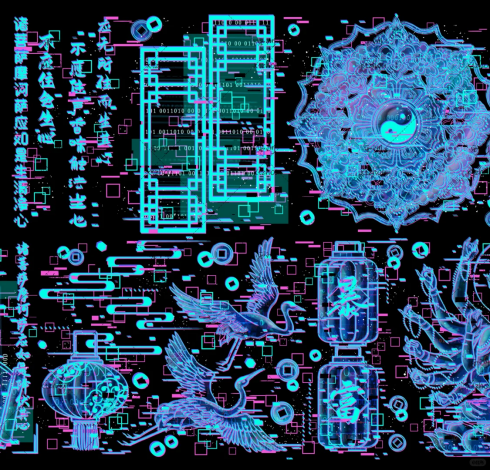
In the field of cultural communication, the Blossoming Composite Floral Pattern has become a special language for telling Chinese stories well. The “Dunhuang Stories” team shares Dunhuang culture worldwide and creates a native Chinese global brand. Elements such as flying apsaras, the nine – colored deer, and the Blossoming Composite Floral Patterns are all sources of their inspiration. The Dunhuang – series silk scarves are their best – selling products. So far, the “Dunhuang Stories” brand has launched more than 300 series of products, with 47 design patents and 68 copyrights. It has been selected as a cultural brand for foreign affairs activities by the Ministry of Foreign Affairs and the former Ministry of Culture. It has been chosen as the exclusive brand for silk and cotton textiles at the Mogao Caves, and has obtained the exclusive authorization and supervision for scarves and clothing from the Dunhuang Academy. It has also been invited to participate in the Japan International Fashion Exhibition. As the saying goes, “The products of ‘Dunhuang Stories’ are like keys, opening the doors to the integration of Eastern and Western civilizations.” This form of expression beyond words enables audiences from different cultural backgrounds to experience the Eastern wisdom of “harmony in diversity”.
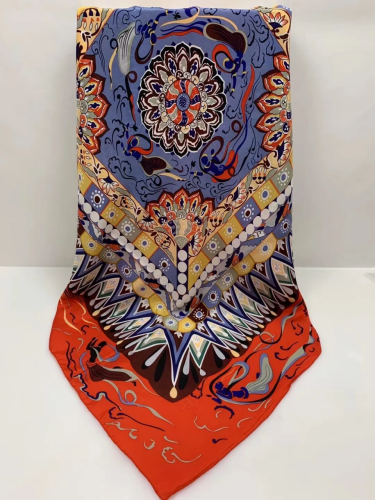
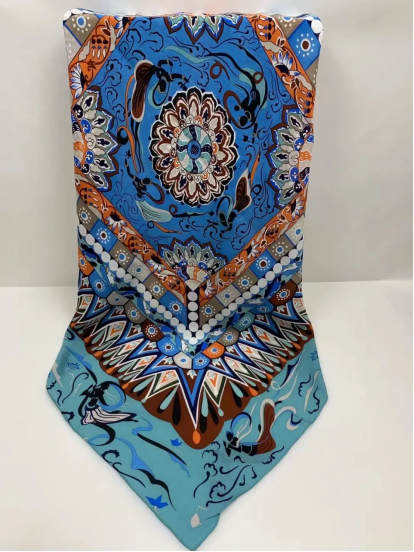
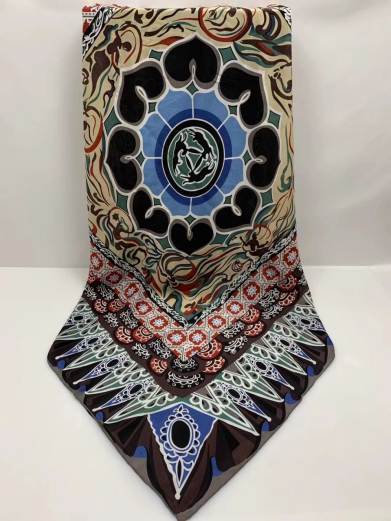
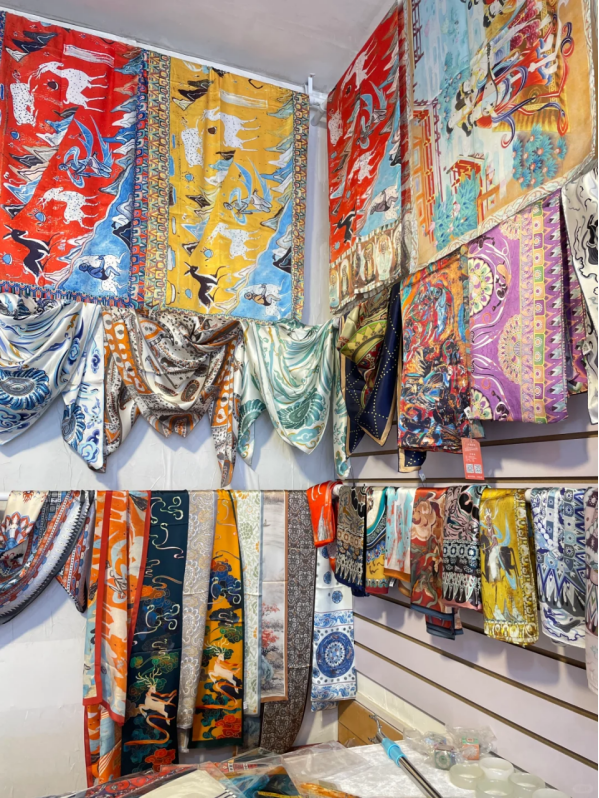
Summary
When we gaze at the Blossoming Composite Floral Pattern on modern Hanfu, what we see is more than just the rebirth of the patterns. From the Dunhuang caisson ceilings to digital fashion in the metaverse, this pattern that has traversed thousands of years has always been an illustration that true civilization is never the replication of a single gene, but rather a new life born from the collision of different cultural DNAs.
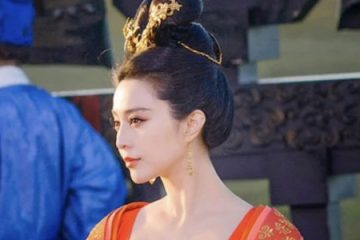
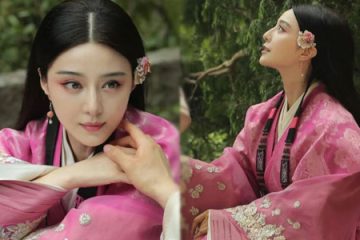
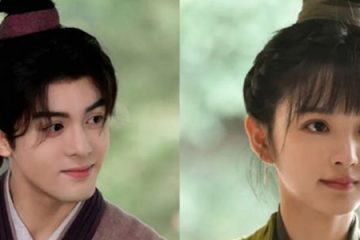
0 Comments